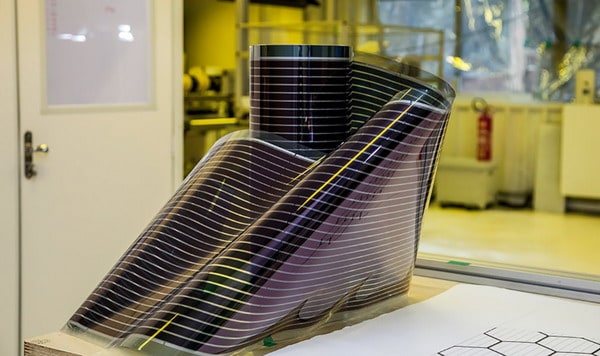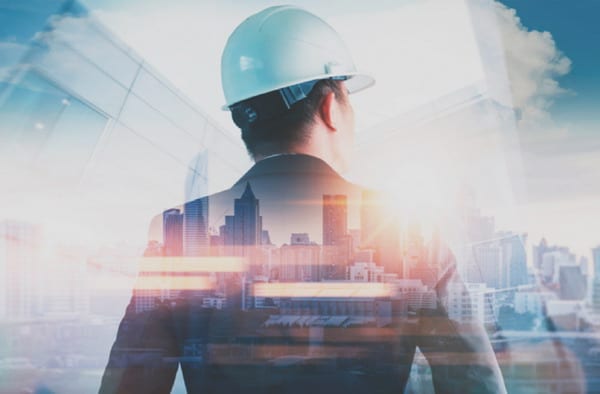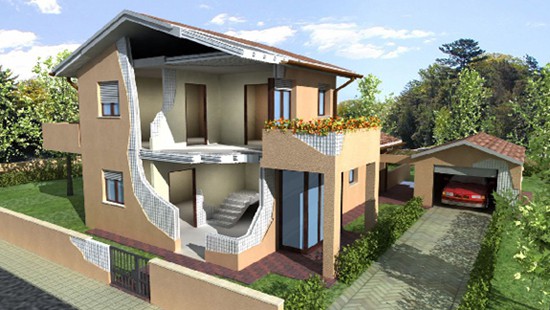
With the use of modern equipment, materials and construction techniques, we can create lighter, more sustainable and more durable buildings. All of this helps to reduce costs, improves productivity and efficiency and offers a construction that aims at a better quality of life for customers.
Therefore, construction professionals need to be aware of all the innovations and technologies that appear on the market constantly. Only in this way will we raise the excellence of construction in United States and be able to keep up with the demands and demands of the market.
What are the main trends in civil engineering?
Check below what are the most expected trends in the civil construction market in United States for 2021:
Focus on sustainability
The concern with the sustainability of the works has been increasing in the construction companies, after all, it is an issue that is increasingly discussed in our society and valued by the market in general.
More than a way to meet consumer demands and reduce damage to the environment, this type of differential also adds better energy efficiency and longevity to the works.
The use of solar panels for the production of renewable energy is already an innovation that has become common in buildings, increasing 560% in two years. But today there is an even more sustainable alternative that can replace photovoltaic panels, Organic Photovoltaic Films.
Also known as OPV ( organic photovoltaic ), this technology consists of organic photovoltaic cells printed on thin, resistant and recyclable film. The main benefits compared to traditional technologies are lightness, flexibility and transparency. The OPV is sustainable since its manufacture and avoids the emission of 120 Kg of carbon dioxide for each square meter of film, per year.
Other sustainable technologies that tend to be increasingly incorporated into buildings are:
- Cisterns for rainwater collection and storage;
- Green roofs as a thermoacoustic solution;
- Skylights for lighting;
- Vertical gardens to regulate the internal temperature;
- Ecological bricks.
In the same sense, the reuse of materials , such as the reuse of floors and tiles, the reuse of old furniture, the use of demolition wood, among others, is a trend to further improve sustainability in buildings.
Advances in user experience
Providing a unique , incredible and remarkable experience to consumers is one of the most relevant requirements of the contemporary market, after all, there are options for purchasing and accessing information at a level never seen before – a fact that also increases the demand of customers.
With the advent of technologies, offering the best service and experience has become another opportunity. The technical assistance to customers offered by companies in the construction sector has become routine from the project to the after-work, something that shows a greater concern with the consumer.
One of the hot technologies is the concept of augmented reality, in which future owners can view the entire finished environment before it begins to be built. This helps to improve trust between the customer and the company, as this way he gets a detailed idea of what he is buying.
The idea of automation is also gaining ground in this area. The trend is that more and more houses allow full control of light, temperature, climate and security system through mobile devices, improving the habitability of buildings.
Use of drones
Already very common in the market, drones are increasingly recurrent items in the construction segment, given their ability to capture photos and videos, or even to make measurements, in places before difficult access.
In a more practical and economical way, they allow initial data to be collected in remote locations or even inspections to be carried out during the execution of the project, whether they are security or to check the organization of the construction site.
Drones also stand out in the commercial issue, since they manage to capture images and videos for advertising the work. Footage of the land and surroundings, the execution stage and the finished construction are used to assist in the sale of the developments.
It is a fact that this type of technology is already growing among construction companies, but the big trend linked to it is its popularization, since prices are expected to fall, making its cost-benefit even better.
Industrialized construction
The execution of works through the modular assembly of prefabricated parts is a technique used on a large scale for years in developed countries. In United States, these technologies have been taking more and more space over the last few years, mainly in large-scale works.
But today there is a great advance in the area, caused by the evolution that this technique has undergone over the years, making more and more constructive models to benefit from it.
If previously only major works, such as buildings and warehouses, benefited from prefabricated technologies, today it is accessible for small enterprises, whether for the construction of houses, attachments and the like.
3D printers are gaining a lot of space, as they allow you to build customized pre-molded pieces quickly and without wasting materials. Today it is already possible to build an entire small house and parts using printers.
This not only guarantees more speed and a better cost-benefit ratio for the entire construction, but also adds a better standard of quality and durability, since the parts are produced in a controlled environment. In addition, the parts are more sustainable, since the waste of materials is less in their manufacture.
Construtechs
Civil construction is the second worst technology adoption sector in the world , behind only hunting and fishing. In this sense , construtechs, startups and innovation companies emerged that produce technological solutions for certain problems in the construction production chain.
Construtechs that have emerged in the world provide various services, ranging from equipment rental, waste management to interactive models and immersive 3D models. Currently, in United States, the majority works with the sale and rental of real estate, but there are others that offer services in the building maintenance and decoration sector and in almost all areas from the project to the post-construction.
Smart urbanization
It will not only be the buildings themselves that will undergo marked changes over the years, but also the entire urban space in which they are integrated!
With the use of new technologies and the integration of data, the capacity of urban planning will be better, bigger and more systemic. All buildings in the city will be connected and work together, improving people’s quality of life.
In order to meet both individual and collective needs, the works must adapt in terms of social impact, undergoing sectorization processes in cities or even adaptive construction methods, such as reconfigurable, active and regenerative works.
Automated machines
Each professional performs his work in a different way. Thus, in the stages of the work in which manual labor is required, the use of human labor can mean low productivity, and even low quality of service or even dangerous work, with risks to the employee’s health.
It is with this in mind that methods are being created to carry out construction stages in an automated way, that is, through machines that do all the physical work.
Through Artificial Intelligence (AI), machines can, for example, build an entire wall by fitting the ceramic blocks with a very low margin of error. Another advantage is that the use of this robotic equipment reduces the risk of accidents with workers.
Intelligent use of data
The Internet of Things (IoT) allows the interconnection and collecting endless data of items used in our daily life, providing insights into their use and income.
In civil construction, the internet of things (IoT) interconnects sensors connected to machinery, equipment, employees and management systems that control inputs and processes.
In this way, it is possible to detect processes that can be improved or correct errors immediately and automatically, since the system itself will do this work.
More than optimizing the inspection of construction sites, this is a trend that will significantly increase the managerial capacity and, consequently, the market performance of the construction companies, which will become much more effective in their activities.
What has been transformed and what has remained in relation to 2019?
When we talk about drones, as mentioned earlier, they may have been part of civil engineering trends in recent years, but the constant evolution of their technology and greater accessibility still position it as an important trend.
In the same sense, issues such as modular constructions, sustainability and user experience technologies, such as augmented reality, have also been pointed out in previous years as natural paths for the sector, but their concrete and recurring advances make it impossible not to mention them again for 2021!
Still dealing with technological advances in civil construction, we can predict even further. A partnership between CBIC and SENAI, Construção 2030 is a project that defines actions for strategic planning for the future of construction in United States, helping companies to understand trends. The project already brings information about important innovations such as coworking , coliving and colearning , zero waste flowerbeds and active houses with zero maintenance.
And did you like to know more about the civil engineering trends for 2021 ? Want to stay on top of even more news and advances in civil construction? So be sure to follow our blog !




